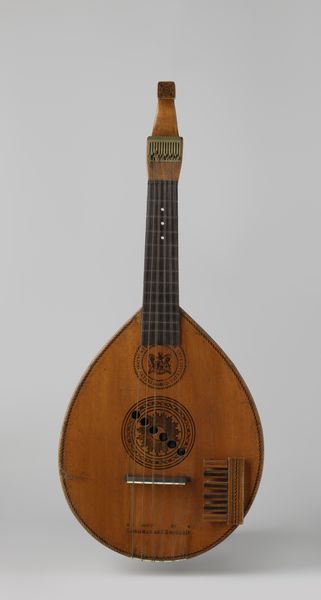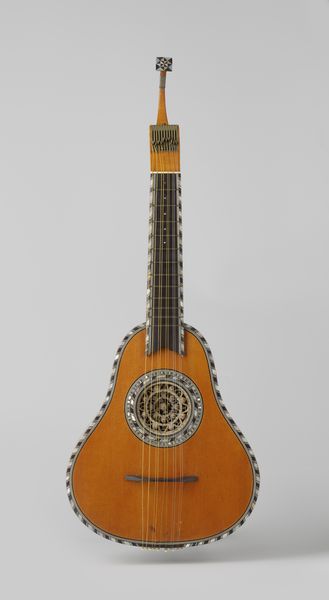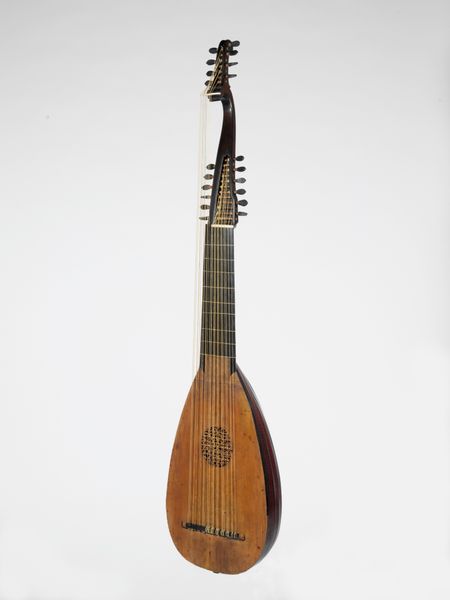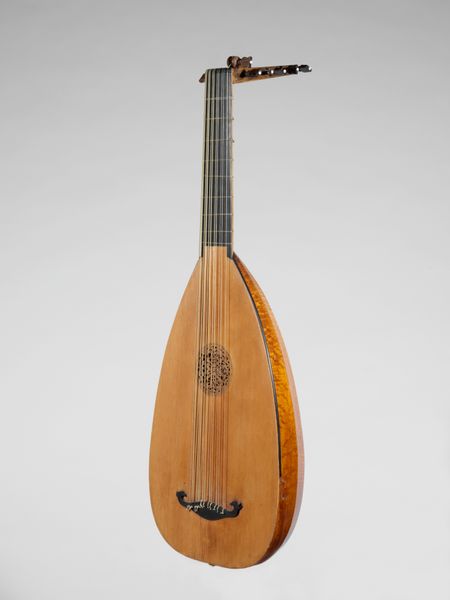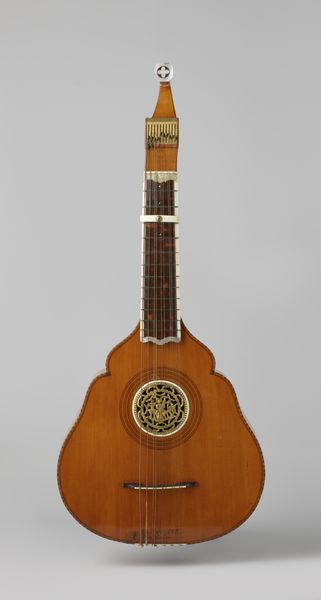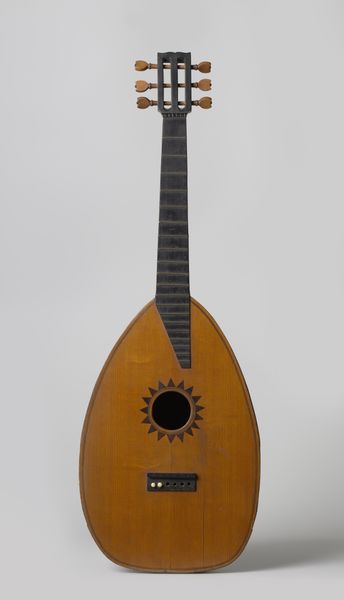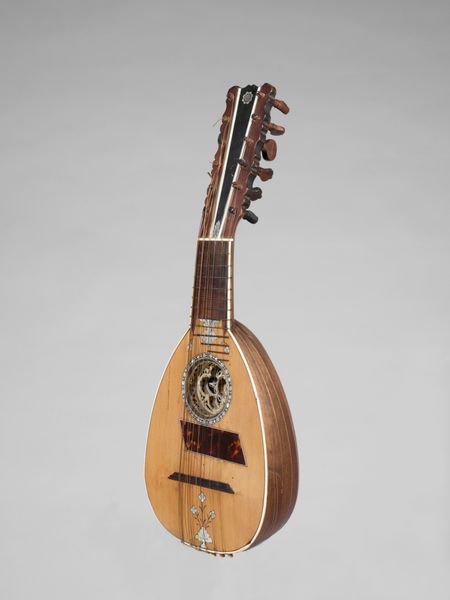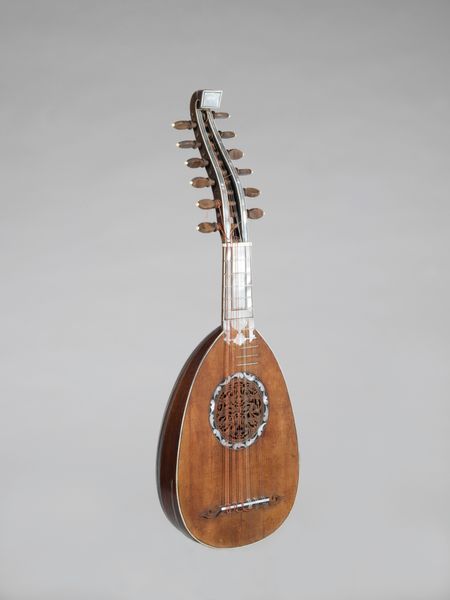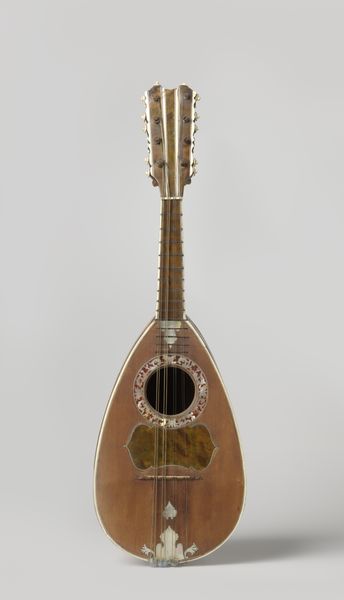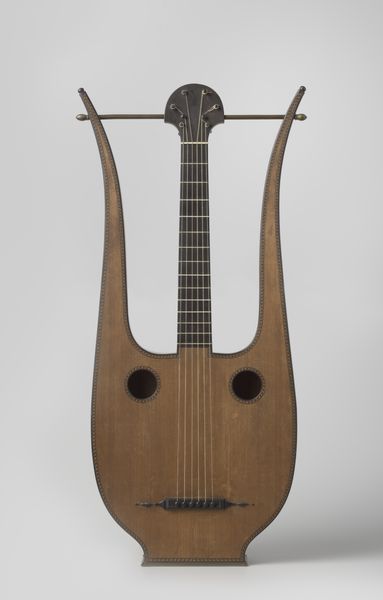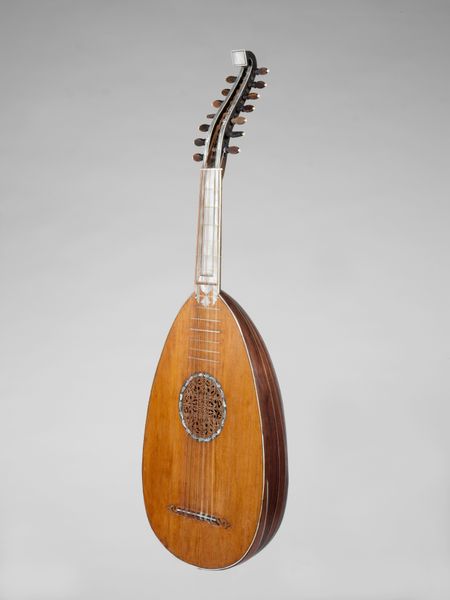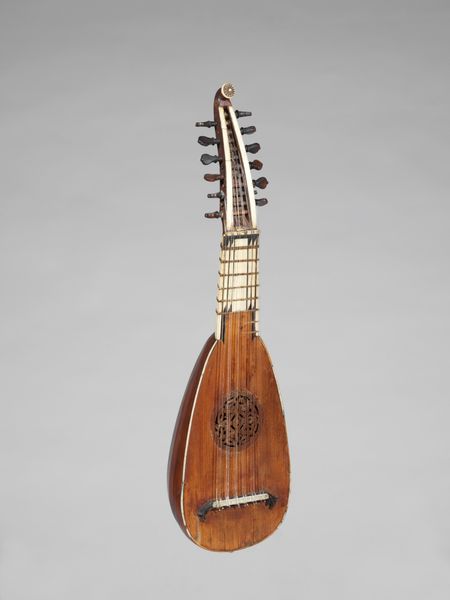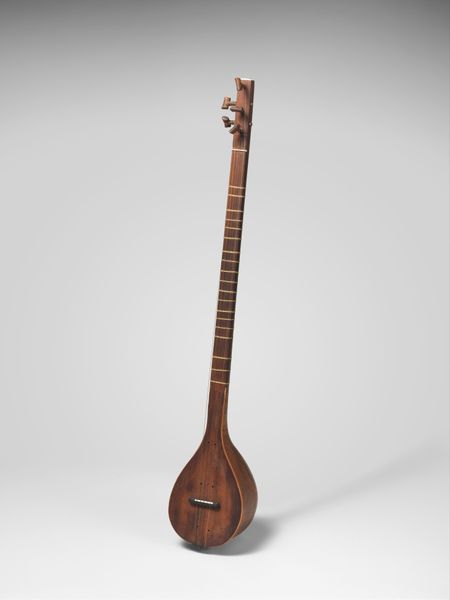
wood
#
baroque
#
wood
#
musical-instrument
Dimensions: height 113 cm, width 34 cm, depth 16 cm
Copyright: Rijks Museum: Open Domain
This archlute was crafted by Matteo Sellas in the 17th century, a period where music was deeply intertwined with emotion and cultural expression. The delicate rosette carved into its belly is not merely decorative. It is a symbolic representation of a rose window, which is commonly seen in cathedrals and symbolizes the divine. This floral motif, a timeless symbol of beauty and spiritual enlightenment, echoes through history. It is reminiscent of the lotus flower in Eastern art. The lotus symbolizes purity and rebirth, rising from muddy waters, thus linking the archlute to a deeper, universal quest for spiritual awakening. Consider, too, the lute’s strings—each vibrating with potential, carrying the weight of human emotion. The strings remind me of Ariadne’s thread; they are a continuous line through the labyrinth of existence. The sound resonates with our subconscious, evoking memories and emotions, thus creating a powerful, emotive connection with the artwork. These symbols are not static, but evolve across time and cultures. They resonate with shared human experiences, subtly influencing our perceptions. Thus, the archlute becomes more than an instrument, it is a vessel of collective memory.
Comments
rijksmuseum about 2 years ago
⋮
Archlutes were very popular in Europe in the 17th century. Made in Venice by the German luthier Matteo Sellas, this is one of his many beautifully-decorated instruments made of ivory and ebony. In contrast to an ‘ordinary’ lute, the archlute has an extra set of long bass strings in addition to the usual strings. This makes it possible to produce a greater range of lower pitched tones.
Join the conversation
Join millions of artists and users on Artera today and experience the ultimate creative platform.
